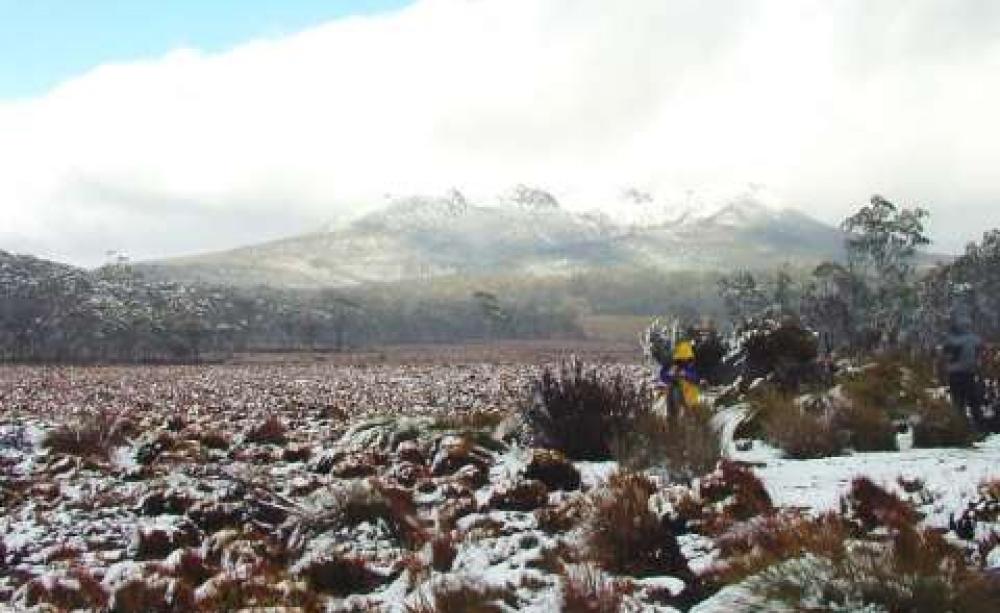The World Heritage extension under debate very strongly reinforces the values for which the area was established. It brings under protection some critical areas that were previously neglected.
The debate around Tasmania's controversial World Heritage extension, under review at international talks in Doha, has centred on forests.
But the area includes far more than 'just' trees - including unique geology and landforms and indigenous culture.
There is nothing to suggest these values have been recognised in the current political squabbling over forests, but the results will determine the future of these important places.
Tasmania's World Heritage area was extended by the previous federal and state Labor governments by 172,000 hectares, partly to satisfy environmental groups as part of the Tasmanian forest peace deal.
The current state and federal governments are seeking to delist 74,000 hectares of the extension, on grounds that the area includes degraded forests, and to open the forests for harvesting.
The 'other' World Heritage criteria
Each of the 981 sites around the world that have received World Heritage designation have had to qualify under one of ten possible criteria. Six of these relate to cultural heritage, and four to natural heritage.
Tasmania is one of only 29 sites that satisfy both cultural and natural heritage values. But even more impressively, the area satisfies seven of the ten criteria, including unique human culture and history, wilderness, plants and wildlife, and geology. Only one other site in the world (in China) equals this number and none exceed it.
The World Heritage extension under debate very strongly reinforces the values for which the area was established. It brings under protection some critical areas that were previously neglected.
The World Heritage guidelines require that in addition to meeting the criteria, the nominated sites should also satisfy the conditions of integrity - a measure of the wholeness and intactness of natural and / or cultural heritage.
The guidelines specify, for example, that if a World Heritage Area is nominated under criterion viii as an 'ice age' area, it should include snow fields, glaciers, and the set of key landforms formed by glaciation.
The ground beneath our feet
The World Heritage extension under debate very strongly reinforces the values for which the area was established. It brings under protection some critical areas that were previously neglected.
Apart from forests, the Tasmanian World Heritage Area contains globally unique geology and landforms (geodiversity), including some that give us a unique perspective on the most recent ice ages.
Much of our knowledge of the Earth's ice age history has been obtained from the northern hemisphere. Tasmania, New Zealand and southernmost South America are the only land at temperate southern latitudes where we can study these ice ages, but geological instability in South America and New Zealand has confused much of the evidence for the earliest glaciations.
In contrast, Tasmania is a stable platform that offers an astonishingly long glacial record that reflects regional climate trends.
Geology and landforms are also fundamental to the operation of many environmental processes, including the functioning of ecosystems.
Indeed the world's first national park, at Yellowstone in the USA, was established not to protect biodiversity but instead to safeguard physical landscape features, namely hot springs and geysers.
The extension solved one previous problem with the integrity of the World Heritage Area. The previous boundaries mostly covered only mountains where ice age glaciers came from, but left the resulting 'moraines' (ridges of rock debris left where the glaciers terminated) unprotected.
Delisting parts of the extension would undo this advance.
Past and living culture
The geology and landforms are also intimately tied to cultural values represented in the World Heritage Area. Glaciers responsible for fashioning the globally significant glacial landscapes of the Tasmanian wilderness also conveyed particular types of rocks that were ideal materials for manufacturing stone tools to the accessible lowlands.
The sites where stone tools were subsequently fashioned and the rich legacy of Aboriginal occupation and culture contained in the limestone caves of the area represent just part of the cultural heritage value of the Tasmanian wilderness.
They provide a link to the past for indigenous Tasmanians who are committed to maintaining their connections with the country from which they arose.
According to the Tasmanian Aboriginal community, the World Heritage extension has not been properly assessed for indigenous heritage sites, and they have not been consulted by the federal government on the proposed delisting.
Not knowing and disregarding this heritage carries the real risk of repeating past mistakes, such as the recent construction of a highway across a 40,000 year old site because the state government and its agencies simply could not be bothered looking properly at the outset of the planning process.
Degraded heritage?
The question of whether the World Heritage extension contains 'degraded' forests has been a key point in the debate.
But the World Heritage system explicitly recognises the worth of including areas that require rehabilitation.
Australia has already set an important precedent for this, with the 1990s rehabilitation of Exit Cave system in south west Tasmania. After quarrying for limestone, the cave system was affected by acid and silt runoff, which was dissolving cave formations and killing unique aquatic cave life.
Federally-funded rehabilitation work at the quarry successfully stemmed the water pollution allowing progressive recovery of the cave fauna.
Rehabilitating logged areas is far less complicated - after all, forestry interests have long been telling us not to worry about logging, because the trees will grow back again just fine.
Kevin Kiernan worked for various environmental NGOs during the 1970s-80s and later as a national park planner before spending 15 years in the employment of Tasmanian state government's forestry agencies until 2002.
This article was originally published on The Conversation. Read the original article.
Also on The Ecologist: UNESCO, protect Tasmanian wilderness
![]()




